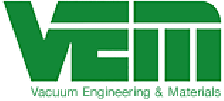
Comprehensive EQMS for Blood and Tissue Industry
Explore how a next-generation, AI powered EQMS ensures excellence at every step—whether it's meeting stringent regulatory requirements, preventing contamination, or optimizing traceability from donor to recipient. With powerful tools for risk management, process automation, and compliance reporting, we help you deliver products that inspire trust, exceed standards, and save lives. Explore the capabilities of Qualityze EQMS for Blood and Tissue industry today!

Empowering Compliance and Quality Excellence in Blood and Tissue
Managing quality and compliance in the Blood and Tissue industry demands precision, accountability, and forward-thinking technology. Our solutions are tailored to address your most critical challenges—sterility assurance, donor confidentiality, cold chain management, and global compliance. With integrated workflows, centralized data, and real-time monitoring, we help you mitigate risks, streamline operations, and maintain the integrity of your life-saving products. Join the leaders in quality management who trust us to turn complexity into confidence.
Video
The Qualityze Difference Empowers You To:
Navigate Complex Regulatory Compliance with Ease
Comply effortlessly with industry-specific standards like 21 CFR Part 1271 and AABB Standards. Pre-configured workflows, audit trails, and integrated reporting ensure adherence to global and regional regulations without administrative burdens.
Execute Rapid and Accurate Recalls
Respond swiftly to quality or safety concerns with a centralized recall management system. Identify impacted units, assess risks, and communicate effectively with stakeholders and regulatory bodies to protect recipients and ensure compliance.
Protect Donor and Recipient Confidentiality
Handle sensitive data securely with robust encryption and role-based access controls. Our solution ensures compliance with confidentiality laws and ethical standards while maintaining seamless data sharing across organizations.
Prevent Contamination with Stringent Controls
Ensure sterility with built-in workflows for contamination prevention and ultra-clean processing environments. Qualityze supports real-time monitoring and alerts for microbial control, helping maintain safety and product integrity.
Streamline Adverse Event Monitoring and Reporting
Proactively manage adverse reactions with automated workflows and pre-defined templates for regulatory reporting. Qualityze facilitates root cause analysis, corrective actions, and ongoing monitoring to prevent recurrence.
Ensure Regulatory Compliance While Optimizing Efficiency
Prepare audits and inspections with centralized, accessible records, robust audit trails, and pre-configured templates for regulatory submissions. Transition from paper-based systems to a digital platform that minimizes errors, reduces waste, and enhances operational efficiency with real-time collaboration and automated workflows.
| Standard/Regulation | Description |
|---|---|
| ISO Standards | |
| ISO 13485 | Quality Management for Medical Devices, Including Blood and Tissue Products |
| ISO 9001 | General Quality Management System Requirements Applicable to Blood Banks and Tissue Facilities |
| ISO 14971 | Risk Management Principles for Medical and Tissue-Based Products |
| ISO 31000 | Risk Management Principles and Guidelines |
| ISO 22301 | Business Continuity Management Systems to Ensure Supply Chain Resilience |
| FDA Regulations | |
| 21 CFR Part 11 | Electronic Records and Electronic Signatures for Traceability and Compliance |
| 21 CFR Part 1271 | Human Cells, Tissues, and Cellular and Tissue-Based Products (HCT/Ps) |
| 21 CFR Part 210/211 | Current Good Manufacturing Practices (cGMP) for the Handling of Tissue Products |
| 21 CFR Part 820 | Quality System Regulation for Medical Devices, Applicable to Blood Storage and Equipment |
| AABB Standards | |
| Comprehensive Quality and Safety Requirements for Blood Banks and Transfusion Services | |
| Standards for Cellular Therapy Services and Tissue Banking | |
| GxP Guidelines | |
| GMP | Good Manufacturing Practices: Ensures Safe Processing of Blood and Tissue Products |
| GLP | Good Laboratory Practices: For Testing and Validation of Blood and Tissue Safety |
| GDP | Good Distribution Practices: Maintains Product Integrity During Storage and Transport |
| EU Regulations | |
| EU Directives 2002/98/EC and 2004/23/EC | Quality and Safety Standards for Blood and Tissue Handling |
| EUTCD | European Union Tissue and Cells Directive, Ensuring Harmonized Tissue Banking Practices |
| ICH Guidelines | |
| ICH Q5A | Viral Safety Evaluation for Biotechnology Products Derived from Cell Lines |
| ICH Q9 | Quality Risk Management to Address Safety and Efficacy Concerns |
| WHO Guidelines | |
| WHO Guide to Good Manufacturing Practice for Blood Establishments | Best Practices for Blood Collection, Processing, and Storage |
| WHO Guidelines for Tissue Donation and Transplantation | Ethical and Safety Principles for Tissue Handling |
Reasons to choose Qualityze EQMS for Blood and Tissue Industry
Choosing Qualityze Enterprise Quality Management Solution will be a beneficial decision for the Blood and Tissue industry because it has
User-Friendly Interface
Simplifies usability with an intuitive design, requiring no technical expertise.Seamless Integration
Fits perfectly with your existing systems to enhance operational efficiency.Cloud-Based Platform
Provides secure, flexible, and anywhere-accessible data management.Automated Upgrades
Keeps you up-to-date effortlessly with automatic version upgrades.Configurable workflows and Fields
Adapts to your unique business processes with configurable options.Low Implementation Costs
Delivers a cost-effective solution without compromising on performance.Minimal Maintenance Needs
Eliminates hardware dependencies, offering easy access from any location.Flexibility and Security
Combines robust security with cloud-based flexibility to meet dynamic needs.AI-Powered Assistant
Offers intelligent support for proactive decision-making and streamlined workflows.The Start of Something Amazing.
Request Demo
Products
All Qualityze ProductsNonconformance ManagementCAPA ManagementDocument ManagementChange ManagementTraining ManagementAudit ManagementSupplier Quality ManagementComplaints ManagementCalibration ManagementMaintenance ManagementInspection ManagementPermit ManagementMaterial Compliance ManagementForms ManagementField Safety & Recall ManagementAdverse Events ManagementIncident ManagementRisk ManagementBatch Records Management8D Process
Industries
LifesciencesFood & BeveragesHealthcareManufacturingMedical DevicesPharmaceuticalsBiologicsBiotechnologyNutraceuticalsCannabisCompounded DrugsBlood & TissueAutomotiveAerospace & DefenseElectric VehiclePlastic and RubberElectronics and AppliancesChemical & AgrochemicalOil & GasEnergy & UtilitiesMetals & Mining
© 2025 Qualityze™ | All rights reserved. | Privacy Policy

























